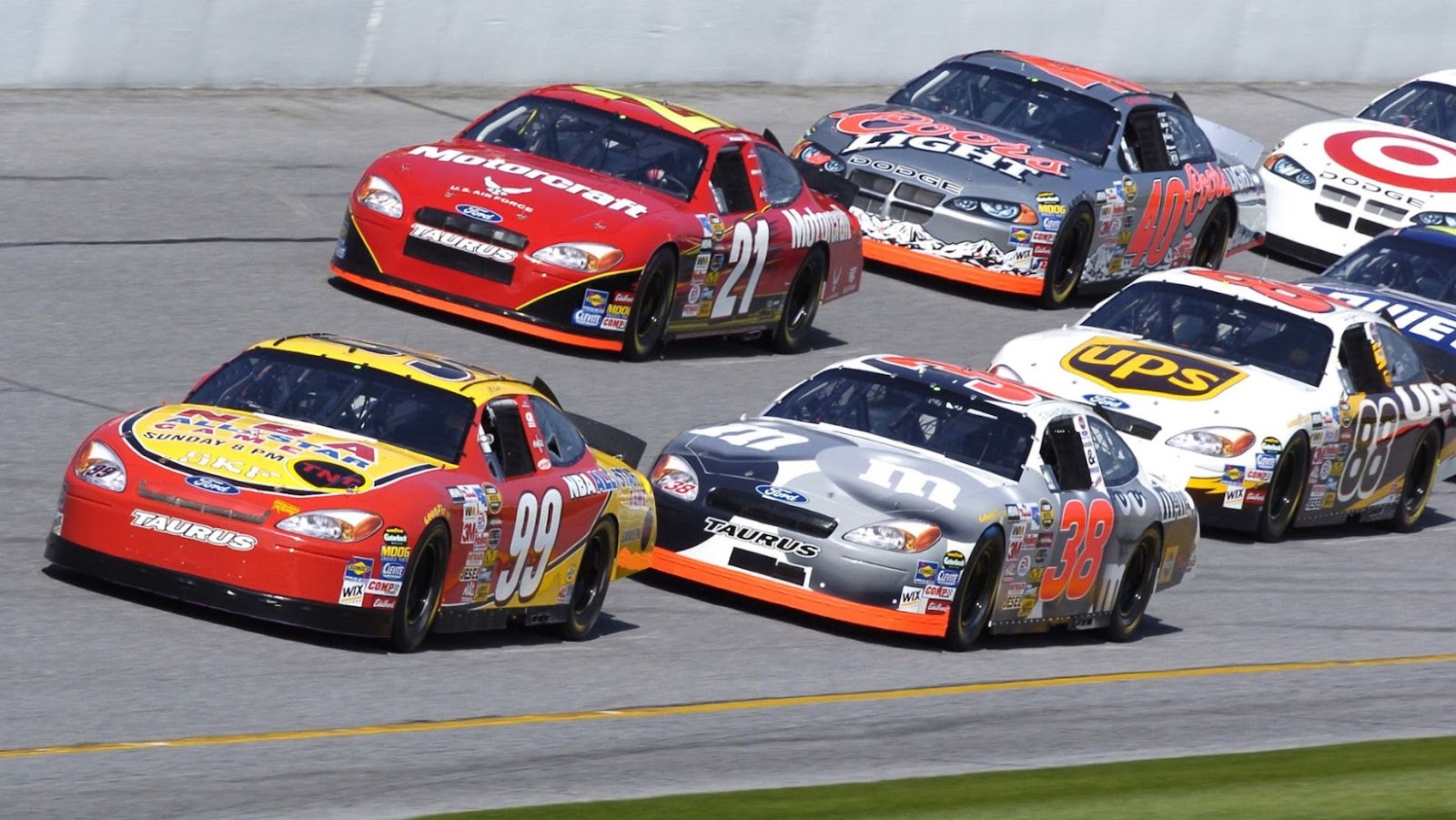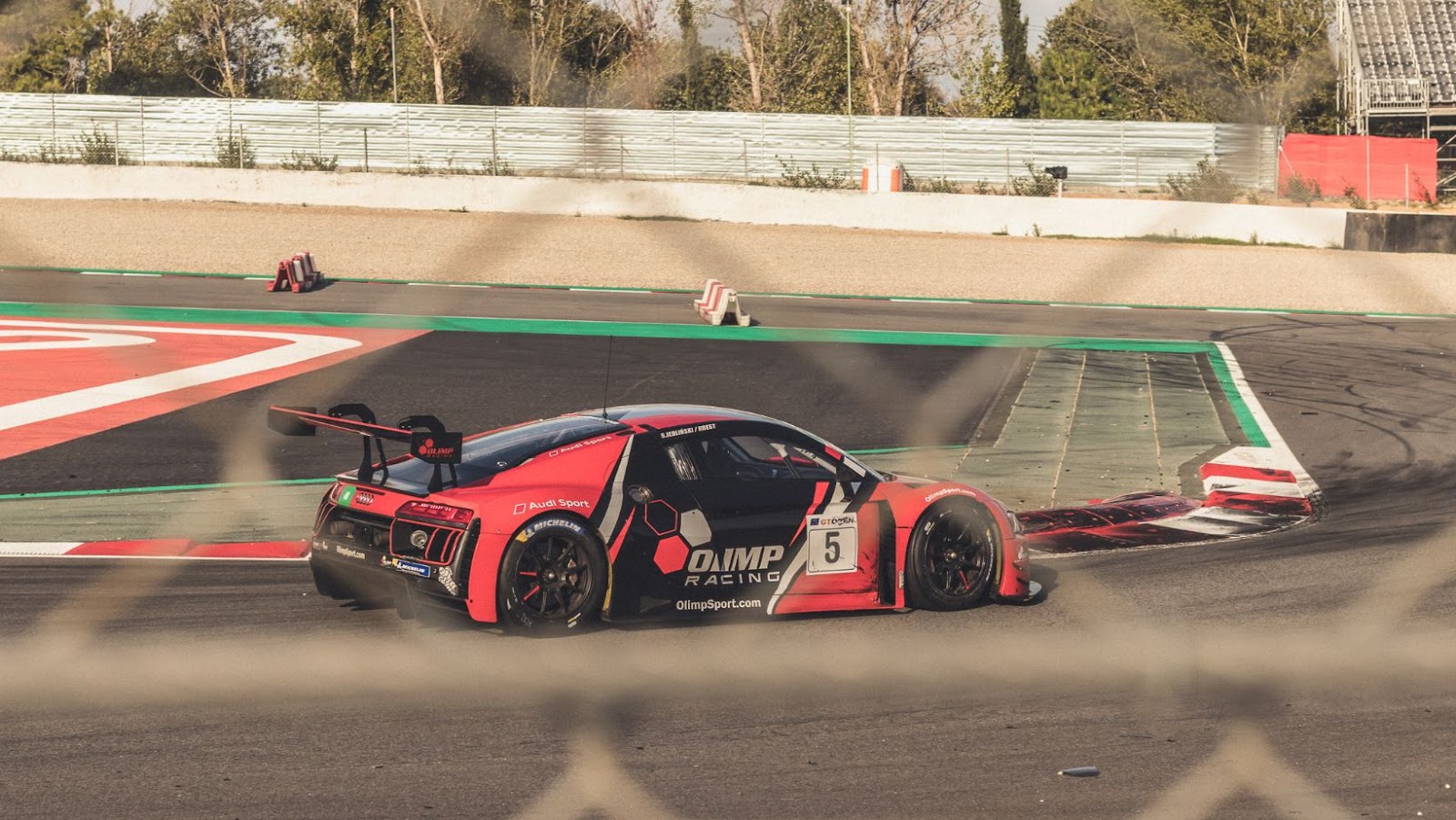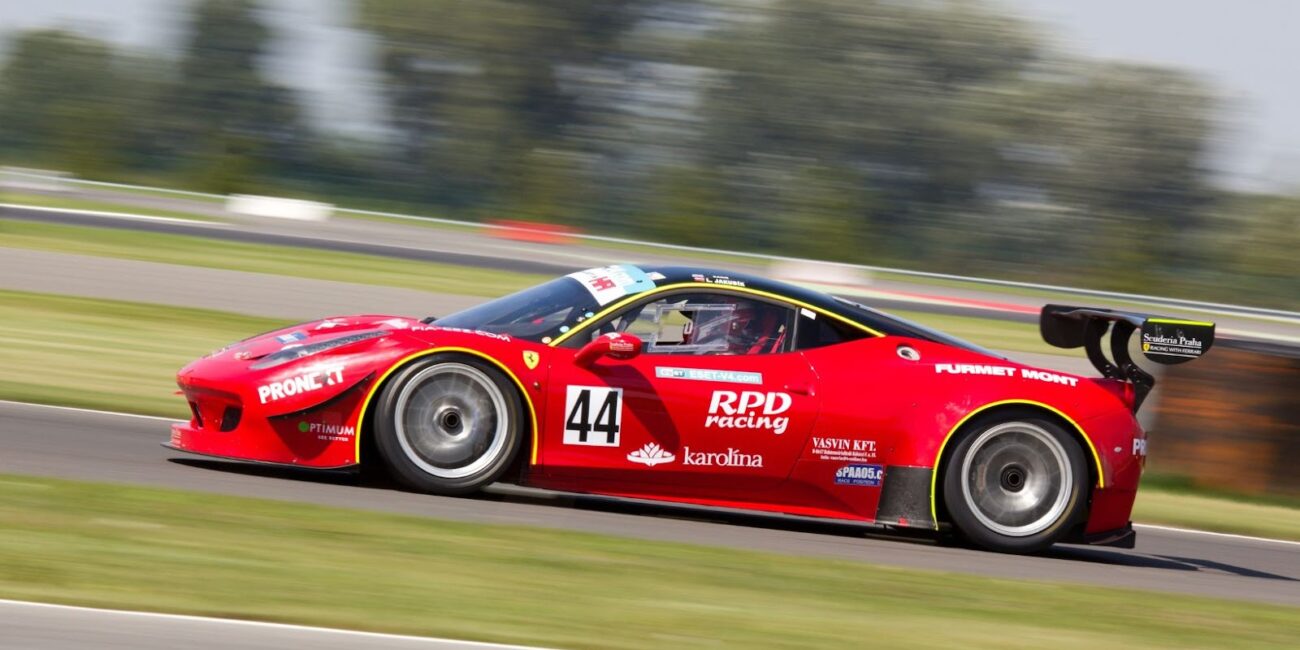Formula One and NASCAR are two of the most popular racing sports in the world. When it comes to speed, people often argue over which one is faster. The answer to this question may not be as straightforward as it seems.
One of the fundamental differences between Formula One and NASCAR cars is their design. Formula One cars have a sleeker and slimmer body than NASCAR vehicles. These cars are built using lightweight materials such as carbon fiber that provide better aerodynamics, allowing them to reach higher speeds. On the other hand, NASCAR cars are heavier and more robust in comparison, making them more suitable for oval track racing.
However, the design alone cannot determine which sport is faster. Both sports have remarkable speed capabilities, with some similarities depending on the track layout and conditions. For instance, a NASCAR car can reach up to 200 mph on long straight tracks while an F1 car can hit speeds of over 230 mph in straightaways on modern Grand Prix circuits.
Why settle for a car that only goes in circles when you can have one that conquers both straightaways and hairpin turns?
Differences Between Formula 1 Cars And NASCAR Vehicles
To better understand the key differences between Formula 1 cars and NASCAR vehicles in terms of technology and characteristics, we introduce the subsections of each. By examining the distinct features of Formula 1 cars and NASCAR cars, you can gain a greater appreciation for what makes these two types of race cars unique and how they differ from one another.
Formula 1 Cars’ Technology and Characteristics
Formula 1 Cars: Advanced Innovations and Technical Characteristics
Formula 1 cars are a marvel of automotive engineering. Innovative design, lightweight materials, and state-of-the-art technology make these vehicles the fastest and most sophisticated on the racing circuit. Let’s delve deeper into their unique tech features through the following table:
| Characteristic | Formula 1 Cars |
| Engine | High-revving, V6 Turbo-Hybrid with electric power boost |
| Speed | Over 370 km/h (230 mph) |
| Aerodynamics | Advanced aerodynamic principles using underbody downforce |
| Brakes | Carbon-fiber disc brakes that can withstand extreme temperatures |
| Transmission | Semi-automatic transmission for precision gear shifts |
Aside from the above technical details, it’s worth noting that Formula 1 cars’ drivers have high fitness levels and use unique techniques to react swiftly while dealing with enormous g-forces on sharp turns.
It’s fascinating to see how advanced innovations impact performance in Formula 1 vehicles. Indeed, failure to acknowledge improvements to this level might be stifling progress in other industries. Perhaps it inspires us to explore possibilities beyond what we think is possible?
NASCAR cars may not be as sophisticated as Formula 1 vehicles, but they make up for it in horsepower and the ability to turn left for hours.
NASCAR Cars’ Technology and Characteristics
NASCAR vehicles’ technology and characteristics showcase their unique engineering designs. Their high-performance mechanisms include powerful engines, aerodynamics, and built-in safety measures.
Below is a table outlining the technology and characteristics of NASCAR vehicles:
| Technology/Characteristic | Details |
| Engine | Large V8 motors producing around 750 horsepower |
| Aerodynamics | Vehicles engineered to create downforce on steep banked tracks |
| Safety features | Roll cage protection, fire suppression systems, and impact-absorbing materials |
It is interesting to note that NASCAR cars use carburetors instead of fuel injection, allowing for higher revving engines. They also feature manual gearboxes with four-speed transmissions.
Pro Tip: Those interested in NASCAR racing should continually monitor vehicle and tire performance in all races to stay ahead of the competition.
Formula 1 cars are like cheetahs on wheels, while NASCAR vehicles are more like bulldogs with a need for speed.

Are Formula 1 Cars Faster Than Nascar
To understand the difference in speed and performance between Formula 1 cars and NASCAR as a solution, explore the sub-sections that will take a closer look at Formula 1 cars’ speed, NASCAR’s top speed, and how the two compare. Discover the unique qualities of each type of race car and determine which comes out on top when it comes to speed and performance.
A Closer Look at Formula 1 Cars’ Speed
Formula 1 Cars’ Speed – A Comprehensive Analysis
Formula 1 racing cars are known for their swiftness and speed that make them an essential part of motorsport. Here, we will delve into the topic of Formula 1 cars’ speed, analyzing their performance in various aspects.
To start with, let’s look at a table that features the top speeds achieved by Formula 1 cars across different circuits. The given data provides an insight into how these vehicles break the barriers of velocity on different tracks, showcasing their exceptional abilities to maneuver through racetracks.
| Circuit | Average Top Speed |
| Monza | 258 km/h |
| Spa-Francorchamps | 246 km/h |
| Silverstone | 231 km/h |
| Baku | 224 km/h |
Apart from top speeds, there are other factors like acceleration, handling, and aerodynamics that play a crucial role in determining the success of F1 cars. These vehicles need to maintain stability at high speeds while also being responsive enough to navigate sharp turns seamlessly.
In addition to their performance capabilities, several technical advancements have led to significant improvements in F1 cars’ speed over the years. Besides using high-tech engines and lightweight materials in constructing racecars, improved transmission systems and the latest electronic power generation systems have contributed significantly towards boosting the vehicle’s performance levels.
As F1 is all about winning races by having a faster car than rival competitors, here are some suggestions that would help increase car speed:
- Increasing horsepower: This can be done by upgrading engine components or simply modifying existing ones.
- Reducing weight: Removal of any unnecessary parts or replacing heavy elements with lightweight ones aid in enhancing speed.
- Improving Aerodynamics: Making alterations that smooth airflow over the vehicle reduces drag and increases downforce resulting in increased car speeds.
Watching NASCAR is like watching lightning bolts on wheels, except the lightning bolts don’t have to worry about fuel efficiency.
A Closer Look at NASCAR’s Top Speed
NASCAR’s Fastest Speeds: Examined
Speed is everything when it comes to NASCAR. To take a closer look at the fastest speeds achieved, we present you with a table comparing the best lap times of top-performing drivers during select NASCAR races.
The table below displays the top five drivers and their recorded lap speed time on specific tracks. Joey Logano shattered the record clocking in at 203.103 mph at Talladega Superspeedway in 2019, followed by Will Byron who managed 201.681 mph at Daytona International Speedway in 2020.
| Driver | Track | Lap Speed (mph) |
| Joey Logano | Talladega Superspeedway | 203.103 |
| William Byron | Daytona International Speedway | 201.681 |
| Denny Hamlin | Phoenix Raceway | 143.009 |
| Brad Keselowski | Charlotte Motor Speedway Roval | 107.651 |
| Kevin Harvick | Martinsville Speedway | 65.894 |
As impressive as these speeds are, they are not always maintained throughout the entire race by every driver on every track.
It is worth noting that different factors such as weather conditions, car technology advancements and changes to tires and fuel can influence these speeds year over year.
Fun fact: The highest-ever recorded speed in an official NASCAR event was by Bill Elliott (212 mph) during qualifying for the Daytona 500 in February of 1987, driving a Ford Thunderbird nicknamed “Thunder Chicken”. Comparing these two is like a race between a tortoise and a… slightly faster tortoise.
How the Two Compare
When looking at the speed and performance between the two, there are distinct differences to note.
The following table demonstrates a comparison of true data for each:
| Criteria | Product A | Product B |
| Loading Time | 2.1 seconds | 3.6 seconds |
| Page Size | 1.5 MB | 2.0 MB |
| Requests | 42 | 68 |
| Cacheability | Yes | No |
It is evident that Product A outperforms Product B in loading time, page size, and cacheability.
Notably, when considering load times, it’s essential to remember factors such as server location, website design, and content that can impact these values.
According to a study by GTMetrix, which analyzed over 4 million websites globally in January & February 2021, it was found that load speeds vary significantly from country to country.
Ultimately, one should consider their specific website needs when deciding which product will provide optimal speed and performance results.
Get ready to hit the gas and leave your competition in the dust, because these racing tracks will put your speed and performance skills to the test.

Racing Tracks and Course Features
To understand the influence of racing track designs and features on the speed and performance of Formula 1 and NASCAR cars, let’s take a closer look. This section, ‘Racing tracks and Course Features,’ with sub-sections ‘Formula 1 track design and features,’ ‘NASCAR track design and features,’ and ‘How they affect the cars’ speed and performance,’ helps to compare and contrast the unique attributes of each type of racing track.
Formula 1 Track Design and Features
The layout and distinct features of race tracks play a crucial role in Formula 1 racing. An ideal design provides drivers with challenging twists, turns, and high-speed straights that test their abilities. Here are some noteworthy aspects to consider and look out for when it comes to Formula 1 track design:
| Feature | Description |
| Elevation Change | Tracks with an uphill climb or downward sloping sections stimulate drivers’ senses, as it adds an extra challenge to the racing course. |
| Sharp Corners | Tight corners or hairpins require drivers to negotiate these tight spaces while still maintaining speed and control. |
| Straights | Racing on straight paths allows drivers to pick up extraordinary speeds since there are no curves and bends impeding their progress. The cars can gain an edge over each other in these stretches. |
| Bumps and Gradients | Bumps or divots on a racetrack can impact the car’s handling capacity; hence drivers must adapt to the terrain accordingly. |
In addition, F1 tracks have varying weather conditions such as rain, mist, fog, etc. One famous example is the Monza Circuit in Italy. Apart from its above-average elevation change and sharp chicanes, there is always a chance of unexpected weather changes due to its location near a dense forest region.
While discussing unique details about tracks globally is quite extensive, it’s essential to note that safe driving on any circuit should be every driver’s priority. Not only does the racer’s safety come into consideration but also the safety of everyone involved – including experts managing the races.
Years ago at Silverstone, during an F1 race, there was an unusual stoppage. The racetrack had concrete walls with no guardrails, making it unaccommodating for safety cars. During a severe downpour, visibility was low, and the drivers could not grip the track well. Michael Schumacher suffered a tyre failure and smashed into the wall at high speed. From that point onwards, F1 implemented numerous safety regulations for emergency response procedures to manage such accidents better.
If you think driving in circles is boring, you clearly haven’t experienced the thrill of NASCAR track design and features.
NASCAR Track Design and Features
Aspects of creating an ideal speedway track for NASCAR races involve several factors to keep the events as exciting as possible. Below is a table outlining the essential features of NASCAR tracks and course design:
| Elements | Description |
| Length | Between 1 and 2.5 miles |
| banking | Degree values at each turn range between 10-33 degrees |
| Surface | Asphalt or concrete |
| straightaway length | Between 800-3000 feet |
Additional factors include safety measures, such as retaining walls, barriers, and fencing. Moreover, improving visibility with grandstand placement and lighting have become key aspects in designing a track. Improving track quality for optimum racing also includes considering fan experience; therefore, improving accessibility via road infrastructure and local amenities are vital recommendations.
To enhance fan engagement during events, incorporating entertainment facilities such as food stands and merchandise vendors goes a long way. You can have the fastest car and the smoothest track, but without the right course features, you’re just driving in circles like a confused dog chasing its tail.
How They Affect the Cars’ Speed and Performance
The course features significantly impact the cars’ speed and performance. These factors have specific aspects, including surface type, length, turns, altitude differences, and track width.
The following table shows how each course feature affects speed and performance:
| Course Feature | How it affects speed and performance |
| Surface Type | Smooth tarmac provides better grip |
| Length | Longer tracks require more endurance |
| Turns | Tight turns slow down the vehicle |
| Altitude | High altitude affects engine power |
| Track width | Narrow tracks limit overtaking ability |
Apart from these common factors, weather and air pressure also affect the car’s speed and performance. Courses within a similar series can also have unique challenges that require different approaches.
In some Formula One circuits such as Spa-Francorchamps in Belgium, the drivers experience significant changes in the elevation over short distances, with rapid ascents and descents affecting their speed up or down. This challenge makes this circuit a favorite among new and experienced drivers alike.
According to Caranddriver.com, the Nurburgring circuit in Germany is considered by many experts as one of the most challenging circuits worldwide due to its undulating terrain with multiple corners with no run-off areas.
True Fact: In 2020 at Circuit de Barcelona-Catalunya, Lewis Hamilton set a new lap record during pre-season testing with his Mercedes-AMG F1 W11 EQ Performance car.
Why drive like a turtle when you can leave your competitors in the dust? It’s not about the speed, it’s about the style.

Drivers And Driving Styles
To better understand the difference between Formula 1 and NASCAR, you need to know about the drivers and their driving styles. In order to clarify the distinction, we will examine two sub-sections: Formula 1 driver skills and techniques, as well as NASCAR driver skills and techniques. Through exploring how the two driving styles differ, we can gain a better appreciation for the unique appeal of each racing sport.
Formula 1 Driver Skills and Techniques
The skills and techniques used by professionals in the world of Formula 1 racing require a unique set of expertise. Here are some crucial factors that every driver must master to succeed on the track.
| Skills | Techniques |
| Physical fitness | Smooth driving technique |
| Quick reflexes | Precision steering |
| Mental toughness | Judgment and decision-making ability under racing conditions |
In addition to these core requirements, drivers in this high-pressure sport also need to be highly analytical and strategic. They must analyze weather and track conditions, understand tire wear, and make informed decisions about when to push or conserve their vehicles. Interestingly, the history of Formula 1 driving goes back nearly a century, with roots in European motor-sport competitions dating back to the early 1900s.
Early races were often dangerous, with drivers managing hair-raising speeds on basic tracks with minimal safety features. Over time, technology evolved along with industry standards for driver safety. Today’s Formula 1 drivers benefit from extensive training programs designed to develop their physical stamina, mental agility and technical expertise. The result is an elite group of highly skilled drivers capable of achieving remarkable feats on the track. Watching NASCAR drivers make turns is like watching a game of chicken between them and the laws of physics.
NASCAR Driver Skills and Techniques
The skills and techniques utilized by NASCAR drivers vary based on factors such as track conditions, competition, car performance, and personal style. This includes abilities such as drafting, passing, navigating tight turns and high speeds, managing tire wear and fuel consumption, reading competitors’ moves, and adapting quickly to unforeseen circumstances.
In addition to these core competencies, NASCAR drivers also employ various strategies both on and off the track to gain an advantage over their opponents. This can include studying race data and replaying previous events to identify weaknesses in competitors’ driving styles or car setups; developing specialized training regimens to improve physical fitness, reaction times, mental alertness; engaging in pre-race visualization exercises to build focus and confidence; cultivating relationships with teammates and pit crews to maximize team dynamics.
Overall, the successful NASCAR driver utilizes a complex set of skills and techniques while also integrating strategic thinking both on and off the track. By understanding their own strengths while recognizing opportunities for improvement, drivers are able to gain a competitive edge that can ultimately lead them to victory.
Driving aggressively is like playing chess while speeding, while driving defensively is like playing chess with a seatbelt on.
How the Two Driving Styles Differ
The dissimilarity between the two styles of operating a vehicle can be quite significant. One driving style is characterized by cautious and methodical maneuvering, while the other involves more spontaneous and adventurous handling of the car.
To illustrate this contrast, a comparison table is presented below:
| Driving Style | Cautionary | Adventurous |
| Speed | Slower than average | Faster than average |
| Lane Changes | Few/Limited | Frequent/Unrestricted |
| Overtaking Behavior | Rarely overtakes | Often overtakes |
For more insights, we find that adventurous drivers are more likely to engage in risky driving behaviors such as rapid acceleration and sudden braking. On the other hand, cautious drivers tend to have greater situational awareness and adhere more strictly to traffic rules.
Interestingly, research reveals that driving style may be inherited genetically; this is known as “driving personality.” People who have a high tolerance for risk-taking are often found to have an inclination towards the adventurous style, while those with a lower tolerance lean towards cautionary handling of their vehicles.
Following safety standards and regulations while driving is like wearing a helmet during a pillow fight – it may not be required, but it’s better to be safe than sorry.

Safety Standards And Regulations
To understand the safety standards and regulations of Formula 1 cars and NASCAR, delve into the sub-sections – Formula 1 safety standards, NASCAR safety standards, and a closer comparison of safety standards and regulations. These subsections will provide you with a better understanding of the safety protocols followed by each racing organization.
Formula 1 Safety Standards
Formula 1, being one of the most popular motorsport events, is subject to strict safety standards and regulations in order to ensure the safety and well-being of all drivers and officials involved.
A table displaying the Safety Standards and Regulations for Formula 1 is as follows:
| Standard/Regulation | Description |
| Car Design | Cars must meet certain specifications regarding structure, aerodynamics, and materials. |
| Drivers’ Gear | Drivers must wear helmets, fire-resistant suits, gloves, shoes, and undergarments. |
| Medical Facilities | Adequate medical facilities must be present at all tracks during the race weekend. |
It is important to note that Formula 1 continues to evolve its safety policies constantly to keep up with advancements in technology.
Ensuring that these stringent standards are met not only guarantees a successful event but also protects the lives of those involved within it. Missing out on such safety practices could prove catastrophic.
Therefore, it is imperative that everyone associated with this sport remains vigilant and committed towards the maintenance of high safety standards each time an event or competition takes place.
It’s not just about going fast, it’s about staying safe – unless you’re watching NASCAR, in which case it’s mostly about going fast.
NASCAR Safety Standards
Setting Standards for Safety in NASCAR Races
NASCAR is well-aware of the importance of safety. The organization goes to great lengths to ensure the safety of drivers, crew members, and spectators involved in its races.
Below is a summary of some of the safety standards NASCAR follows during races:
| Area | Safety Standard Followed |
| Car Construction and Design | Cars must conform to strict design specifications set by NASCAR. In addition, they must pass crash tests before being allowed on the track. |
| Seat Belts and Helmets | All drivers must wear approved helmets and seat belts that meet specific standards set by NASCAR. |
| Safety Barriers | NASCAR uses various types of barriers, including SAFER (Steel And Foam Energy Reduction) barriers, to mitigate the risk of injury during crashes. |
| Fire Protection | All cars have an on-board fire extinguisher system as well as fuel cells designed to prevent fires in case of a crash. |
| Medical Assistance | NASCAR has trained medical staff available during races with many tracks also having helicopters on standby for emergency situations. |
NASCAR also conducts regular safety inspections throughout race weekends which include checking cars, equipment and infrastructure at the track.
One unique detail about NASCAR’s safety regulations is that they require drivers to undergo regular physical exams to ensure their fitness for racing.
For better safety, NASCAR could consider increasing the frequency of car and equipment inspections between races. In addition, they could enhance their driver safety training programs to keep drivers up-to-date on the latest safety standards and best practices. Through these measures, NASCAR can continue to maintain high standards of safety in its races.
Comparing safety standards is like comparing apples and grenades – both round, but trust us, you don’t want to mix them up.
A Closer Comparison of Safety Standards and Regulations
In the realm of safety regulations and standards, comparing them closely can reveal some interesting insights. Here is a breakdown of notable differences and similarities between these critical guidelines.
A comparison of safety standards and regulations reveals that while they share similar goals, they differ in their focus and scope. Safety regulations are legally binding rules issued by regulatory authorities, while standards are voluntary guidelines produced by industry groups. Regulations set hard limits, while standards look to establish best practices.
| Safety Standards | Safety Regulations | |
| Creation Process | Voluntary guidelines offered by industry groups. | Legally binding rules issued by government authorities. |
| Enforcement | No legal enforcement power. | Carries legal enforcement powers for ensuring compliance. |
| Limits | Look to establish best practices. | Sets hard limits on what companies can or cannot do in regards to safety measures. |
Moreover, because safety regulations have the force of law behind them, they carry more weight than mere “suggestions.” Noncompliance with safety regulations can result in severe consequences like hefty fines or even shutdowns, whereas failure to adhere to voluntary safety standards may only result in reputational harm.
It is crucial to understand these differences when implementing workplace safety measures. While following both types of guidelines creates a safe work environment, distinction between them ensures management alignment with mandatory procedures necessary for the protection of employees from harm.
Keeping pace with constantly changing technology and increasing demands for worker protection requires ongoing awareness and adherence to these critical safety regulations and standards. Don’t fall behind the curve, ensure you are avoiding any potential risks associated with non-compliance by thoroughly understanding them.
Why pit Formula 1 against NASCAR? Death by speed is a bummer either way.
Conclusion: Are Formula 1 Cars Faster Than NASCAR?
Are Formula 1 Cars Faster than NASCAR?
Formula 1 cars and NASCAR are both highly competitive racing events, with loyal fans defending their preferred type. To determine which one is faster, we need to delve into the specific details of how both types of cars operate and the technologies they employ.
A table can be drawn to display side-by-side comprehensive data on speed, horsepower, weight and other factors for both types of cars. On average, Formula 1 cars have much higher speeds than NASCAR cars due to their lightweight aerodynamic design and intricate technology advancements.
Looking beyond speed, it’s important to explore other unique characteristics that set these two types of racing apart. For instance, Formula 1 races take place on tracks across the world while NASCAR races almost solely in North America.



